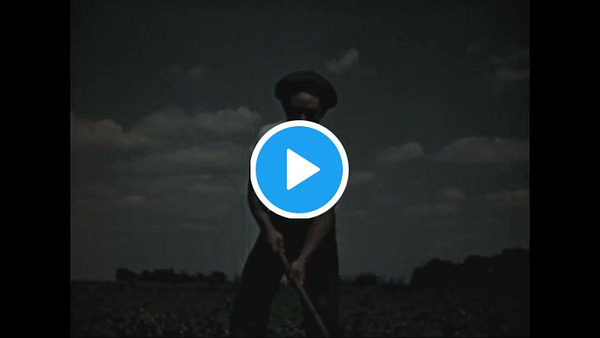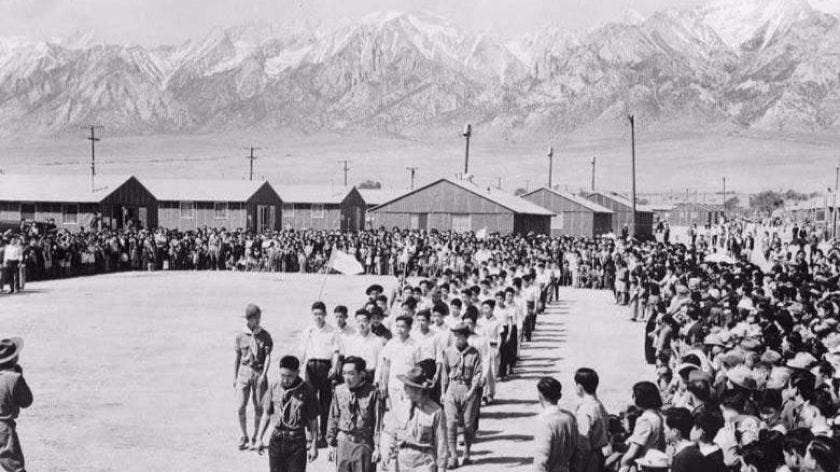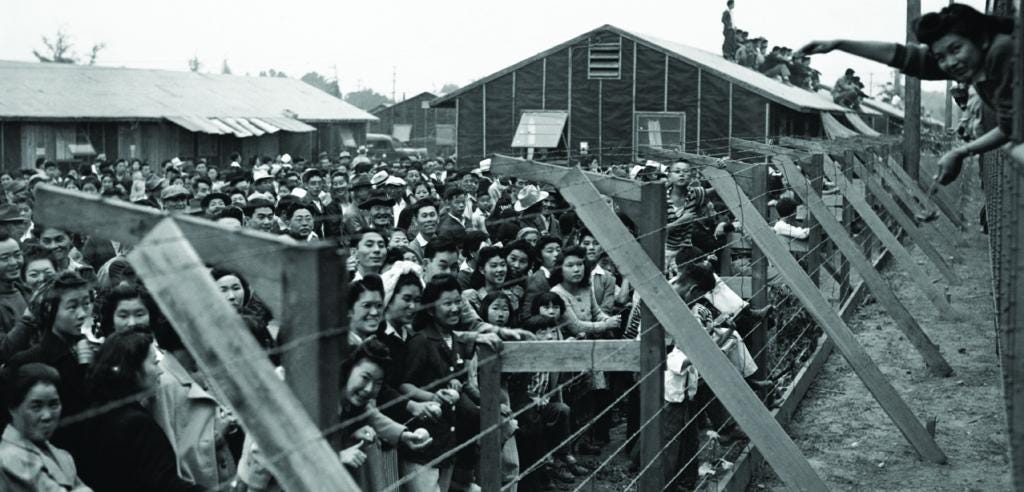An amazing forgotten artifact from anti-Asian racism in America
I bet you haven't seen this before
Racism usually backfires in one way or another.
Today I want to tell you a story about an incredible forgotten artifact that speaks to this theme. But first, the timely reason why I’m telling you this story:
Yesterday’s horrible murder of 6 Asian American women by a white man in Georgia was a stinging reminder of the nearly 3,800 incidents of hate crimes against Asian Americans–mostly women over the past pandemic year.
Those studying this trend say former president Donald Trump bears some responsibility for encouraging racism among his followers, including his repeated use of a racist nickname for Covid, “Kung Flu.” Although the investigation into the shooter’s motives will continue, he was reportedly an evangelical Christian and gun aficionado.
With that modern day racism against Asian Americans on our minds, I want to take a brief moment to look back at some of the historical racism that Asian Americans have faced. We’ll end with an amazing artifact that very few people alive today have seen.
Asian Americans built this country
The California gold rush of the mid-1800s brought an influx of Chinese immigrants to America’s west coast. But as the gold dried up, Chinese workers found jobs working in many sectors of American society, particularly on the west coast.
Asian Americans forged pivotal infrastructure like the transcontinental railroad in the 1860s, working for as little as $1/day. When the Chinese Exclusion Act kept one group of immigrants out due to racism, Japanese immigrants arrived to fill labor shortages. Like many groups, Asian Americans helped built America.
The most famous anti-Asian racism in US history
The most famous incident of anti-Asian racism wasn’t a discriminatory employer or man with a gun.
It was FDR’s WWII Executive Order 9066 which rounded up Japanese Americans and placed them in concentration camps.
There’s no denying that Roosevelt was a great president in many respects: he created Social Security, made critical banking reforms after the stock market crash that led to the Great Depression, championed unemployment aid during the worst economic crisis the world had ever seen, and led America to victory against the Nazis during World War II. He did all this while mostly paralyzed from the waist down, sometimes pulling himself up the back stairways of buildings he was scheduled to speak at on his hands and knees, afraid a photographer would catch him.
But he also held in his heart some deeply racist views. Particularly against Japanese people. Before he was president he wrote in a 1920s newspaper editorial: “Japanese immigrants are not capable of assimilation into the American population.” He also spoke out against interracial marriages, saying that children born of these unions were “in nine cases out of ten, the most unfortunate results.”
Shortly after Japan attacked America at Pearl Harbor, FDR ordered 120,000 Japanese Americans were sent to interment camps or “relocation centers.” The people who were sent to these camps were predominately on the west coast, where the largest populations of Japanese Americans lived. Many living in the midwest or east coast were subjected to restrictions but not necessarily put in camps.
It backfired.
Like nearly every country involved in World War II, America was quickly beset with labor shortages. Men who were eligible for military service were quickly trained and deployed abroad. This left a huge number of vacant jobs back in the United States.
Rounding up over a hundred thousand Americans and putting them in useless camps– thus preventing them from working–was a spectacularly useless decision. But of course, racism is not really motivated by logic.
It didn’t take long for US officials to realize they had tied one hand behind their backs in their efforts to win the war. Less than a year after the internment camps were set up, officials were trying to figure out how to get people out of the camps and back to work.
An extraordinary artifact from the mistake of interment camps
All of this history brings us to the tale of an incredible, surprising propaganda film produced by the US government during World War II. It was not made to be viewed by the general American public. Instead it was produced to be shown to a niche audience: Japanese Americans who would soon be allowed to leave the camps and get jobs.
Often these were second generation Japanese Americans: the War Relocation Authority deemed those born in the United States to be loyal enough that they could be trusted in key wartime roles.
With the war still ongoing, the propaganda film did not admit that the internment camps were a mistake. But it’s an extraordinary document that shows how the American government was forced to backtrack from racist policies in real time.
The narrator says: “Consider the record of the Japanese people in America. It's something to be proud of!” You can watch a brief clip from the film, embedded in this tweet:


I highly recommend watching the full vintage propaganda film called The Way Ahead, uploaded by the US National Archives on YouTube. It’s a strange forgotten treasure from a past time when the government realized institutionalized racism was a mistake– and costing them big time.
Apologizing for past mistakes
The US government would later formally apologize for Japanese interment camps. President Ford declared the camps a "national mistake" which "shall never again be repeated," and reparations were later paid to surviving internees. Ford said:
"We now know what we should have known then—not only was that evacuation wrong but Japanese-Americans were and are loyal Americans.
On the battlefield and at home the names of Japanese-Americans have been and continue to be written in history for the sacrifices and the contributions they have made to the well-being and to the security of this, our common Nation."
As we move forward with the past in mind, let’s try to realize mistakes before we make them next time.
That’s all from me for now. I’ll see you next time on this occasional forgotten history newsletter.
Your history friend,
Arlen
Did you learn something new from this newsletter? Please consider sharing it! Encourage others to subscribe for free.
Liked this newsletter? Please subscribe!








